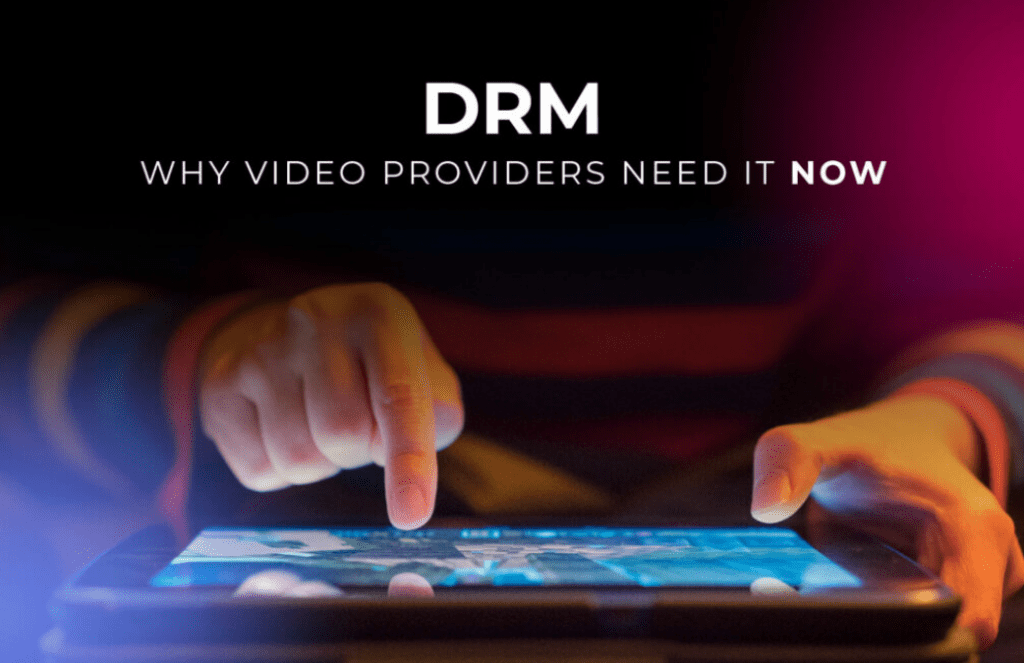What Is Offline DRM?
When watching movies on Netflix, Hulu, HBO Max, or other popular services, media is streamed using DRM protection rather than stored locally. This prevents the content from being downloaded and copied, then spread indefinitely on pirate websites. DRM helps protect content creators’ copyrighted works and allows them to make their service available together with pre-defined usage policies per content.
The only problem here is that this requires a constant internet connection. In most cases, this is fine. However, there are times and places when the internet is unavailable, yet customers still want to access content for entertainment or educational purposes.
This is where offline DRM steps in. Digital rights management, or DRM, protects digital content from malicious activity during distribution, storage, and playback. It allows the content to be distributed and viewed in a controlled manner.
Setting up a system that allows for the streaming of offline DRM-protected content creates an avenue for entertainment in situations without internet access. With this system, customers can watch movies or TV shows when they otherwise would be unable to.
Setting Up An Offline DRM System
So, what is the process of setting up a system that enables offline DRM streaming? Streaming content in an offline environment can be a key service for a business to offer, so understanding it is vital.
First, the business needs to look into acquiring content, either directly from the studios or from a media distribution service. This gives them the license to stream the content in the first place. In this way, the business is somewhat similar to a theater, in that they have the right to exhibit various films and TV shows to others.
Next, the business needs to set up a multi-DRM service that will allow users to play offline DRM content on any portable device regardless of operating system (OS). Setting up this service will give them the ability to stream the content they have licensed to any device type and OS, whether tablets, mobile phones, or laptops running Android, iOS, Windows, or Mac OS.
It is important to choose a service that is proven and secure. It should meet all security requirements for your environment as defined by the studios you license from or the media distribution service you choose. Content from U.S. studios must be protected using guidelines from MovieLabs, a studio-owned entity that publishes the Enhanced Content Protection specification.
Who Should Use Offline DRM Streaming Services?

Offering a robust streaming service can be a key advantage for many different businesses. It can set you apart from your competition, especially if your service comes with additional features.
In-flight entertainment (IFE) and in-vehicle streaming are two of the most common use cases. Streaming DRM-protected content gives your customers something to do during their trip. It is a perk that will entertain and that most will appreciate.
Offline content is particularly important on airplanes. In these situations, customers are cut off from land-based content sources. Being able to stream DRM-protected content will eliminate this problem and make compelling IFE services possible.
It can also be helpful on buses, trains, or even cruise ships where internet access may be interrupted or plain unavailable. Long journeys, especially international travel, may take customers outside the range of their data coverage. Travel crossing country lines may force customers to use expensive roaming, which many may be unwilling to accept.
A streaming service can also be an advantage for remote hospitality businesses where internet access is either spotty or unavailable. In these cases, you can still provide entertainment for guests without having to count on reliable internet.
Examples of use cases in this category include hotels, hospitals, camping sites, oil platforms, military bases, or other lodging facilities. Basically, any place where customers are staying, sometimes for longer periods of time.
Choosing An Offline DRM Streaming Service
Businesses interested in a DRM service provider should consider a couple of options before making their decision. Doing so can help them choose a service that will help them and their customers the most.
As mentioned above, one of the most important things to consider is content security. Make sure you are dealing with a reliable provider whose service will keep content secure.
While choosing this service, it is also important to consider what type of user devices your business will allow. In some cases, this streaming will only extend to screens owned by the business. This can be seen on some airplanes, where content is only available on the seatback displays.
It can also be an option in other cases. Hotels provide TVs in each room anyway and may choose to have these be their go-to option for streaming.
However, it is becoming more and more popular to provide DRM-protected content over WiFi and simply allow anyone connected to access the streaming service. This would allow customers to bring their own devices referred to as BYOD (bring your own device). This provides advantages for both the customer in terms of convenience and the business by lowering upfront investments (CAPEX) in expensive seatback systems and wired cabin distribution infrastructure.
Customers may end up feeling more comfortable with the BYOD option. For many, this is their preferred way of watching video in any situation, especially when traveling. Providing this ensures that the customer’s habits do not have to change, and because of this, they will be happier.
The Advantage
In the end, there are plenty of advantages to offline DRM streaming. As long as a business carefully picks its multi-DRM service provider and chooses services that will suit its needs, it will help the business while also helping its customers. In this situation, everyone wins.

Recent Comments